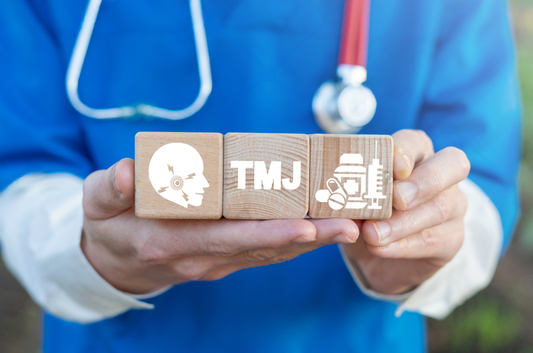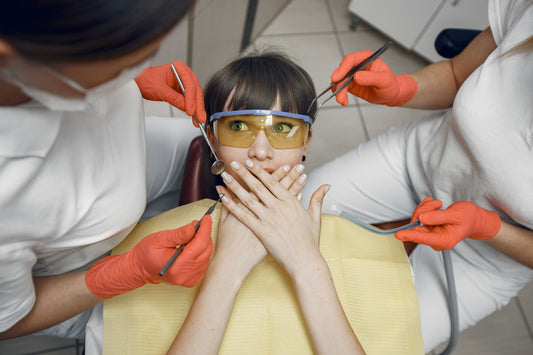
Achieving a Functional Cure for TMJ Disorders: A Modern Dental Perspective
Table of Contents
- Understanding the Multifactorial Nature of TMJ Disorders
- The Role of Maxillary Underdevelopment in TMJ Dysfunction
- Objective Measurement of Neuromuscular Harmony
- Introducing the Clench Relief® Anterior Alignment Guide: A Functional Approach to TMJ Treatment
- Clinical Outcomes and Patient Benefits
- Moving Beyond Traditional Splints: A Functional Approach
- Conclusion
Temporomandibular joint (TMJ) disorders can be debilitating for patients and notoriously challenging for dental professionals seeking lasting solutions. In this article, Dr. David Frey delves into a modern, functional approach to TMD that goes beyond traditional splint therapy. By focusing on neuromuscular harmony, anthropological insights on craniofacial development, and objective diagnostic methods, he outlines a pathway to relief that promises both immediate and long-term benefits. Below, you’ll discover how innovative tools—like the Clench Relief® Anterior Alignment Guide—are shifting the industry’s perspective and helping deliver a more predictable, effective approach to TMJ dysfunction.
Understanding the Multifactorial Nature of TMJ Disorders
For decades, dentistry has struggled to define a definitive cure for temporomandibular joint disorders (TMD). Various philosophies and treatment modalities have been proposed, yet no universal solution has emerged due to the complexity and multifactorial etiology of the condition. Understanding the root causes of TMD is essential for developing effective, long-term management strategies for our patients.
A prevailing theory suggests that modern dietary changes in Western civilization have significantly contributed to the rise of TMD. Anthropological research indicates that early hunter-gatherers consumed a diet rich in tough, fibrous foods, which required significant masticatory effort. This continuous mechanical stimulation played a crucial role in the proper development of the maxilla and mandible, ensuring optimal occlusion and neuromuscular balance. In contrast, contemporary diets consist primarily of processed, softer foods, leading to reduced functional loading on the masticatory muscles and subsequent underdevelopment of craniofacial structures.
The Role of Maxillary Underdevelopment in TMJ Dysfunction
The correlation between maxillary underdevelopment and TMD cannot be overlooked. In many patients, inadequate growth of the maxilla results in a constrained dental arch, limiting the mandibular range of motion. As the lower jaw attempts to occlude within a restricted maxillary framework, malpositioning and muscular compensation occur, leading to chronic strain on the temporomandibular joint. Additionally, conventional orthodontic treatment often prioritizes esthetic alignment over functional harmony, inadvertently exacerbating joint instability by positioning teeth without adequately considering muscle relaxation and joint positioning.
To effectively treat TMD, practitioners must focus on achieving neuromuscular balance, ensuring equilibrium between the occlusion, musculature, and joint. This concept, known as the "zone of comfort," represents an ideal mandibular positioning where muscular hyperactivity is minimized, and joint loading is optimized.
Objective Measurement of Neuromuscular Harmony
One of the most effective diagnostic tools for assessing TMD is electromyography (EMG). By placing electrodes on the masseter and temporalis muscles, we can objectively measure muscle activity and determine whether excessive strain is present. At rest, muscle activity should be minimal, and during light-centric occlusion, anterior temporalis activity should remain low. If hyperactivity is observed, it often indicates underlying neuromuscular dysfunction that requires correction.
Introducing the Clench Relief® Anterior Alignment Guide: A Functional Approach to TMJ Treatment
Through extensive clinical research and decades of experience, we have developed the Clench Relief® Anterior Alignment Guide —a novel approach designed to reposition the mandible into an optimal, relaxed position. This guide facilitates anterior mandibular translation, allowing the lower incisors to free themselves from the trappings of the lingual maxillary anterior teeth and align in a more centered and favorable position with the upper incisors while maintaining a balanced neuromuscular state. By centering the mandible with the upper skull and decompressing the temporomandibular joint, the guide allows the lower jaw to reposition itself into a "harmony" position between the muscles and the TM joint. This is the first step that will help alleviate the primary stressors contributing to TMD symptoms.
The Clench Relief® Alignment Guide works by:
- Encouraging proper mandibular re-positioning through controlled anterior guidance.
- Allowing direct visualization of lower jaw symmetry for improved diagnostic accuracy.
- Creating a space between the upper and lower posterior occlusal surfaces enables the patient to fabricate a customized occlusal appliance that maintains the therapeutic position.
The Clench Relief® Anterior Alignment Guide is then clipped to an EVA latticed frame that extends over the occlusal surfaces of the posterior teeth. To stabilize the occlusion in the patient's ideal “Zone of comfort” position, polyvinyl siloxane impression material is mixed, rolled, and packed into the posterior portion of the Clench Relief® EVA latticed frame with the clipped Alignment guide attached and placed in between the upper and lower posterior occlusal surfaces. As the polyvinyl siloxane takes 3 minutes to harden, the patient maintains this physiologic repositioned mandibular position by the Clench Relief® Anterior Alignment Guide. Once the polyvinyl siloxane material fully sets, the Clench Relief® Anterior Alignment guide can be removed and discarded, as it is no longer needed. Without the alignment guide, the EVA frame with the embedded hardened putty will support the patient's posterior occlusion in its optimal alignment without any anterior teeth contacting thus preventing the lower jaw from reverting back to its previous dysfunctional state
Clinical Outcomes and Patient Benefits
Once the patient adopts this repositioned mandibular posture, significant symptom relief is observed, including:
- Reduction in myofascial pain
- Alleviation of headaches and neck tension
- Decrease in joint popping, clicking, and locking
- Improved stability in occlusion and muscle coordination
For long-term management, patients may require a more permanent orthotic that maintains this optimized jaw position during function. While the Clench Relief® Alignment Guide serves as an essential first step in determining the ideal therapeutic position, a custom-fabricated, full-time orthotic may be necessary for patients who require further stabilization as eating is also essential.
Moving Beyond Traditional Splints: A Functional Approach
Historically, many dental practitioners have relied on occlusal splints as a first-line treatment for TMD. However, unless these appliances actively facilitate proper mandibular repositioning, they often fail to provide lasting relief. The Clench Relief® Alignment Guide differentiates itself by focusing on neuromuscular balance rather than simple occlusal coverage . This paradigm shift emphasizes correcting the underlying dysfunction rather than merely maintaining symptoms and only protecting the occlusal surfaces from further masticatory damage and wear.
Conclusion
TMD treatment requires a multidisciplinary approach that considers the interplay between occlusion, joint stability, and neuromuscular harmony. By utilizing objective diagnostic tools like EMG and implementing functional treatment modalities such as the Clench Relief® Alignment Guide , we can move closer to a predictable and effective solution for our patients suffering from TMD. As dental professionals, our goal should not be merely to manage symptoms but to restore proper function and improve quality of life for those affected by this often-debilitating condition.



